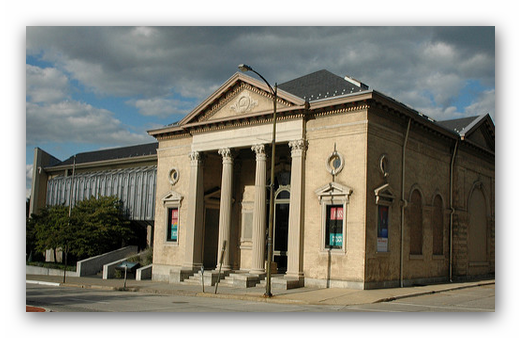Mar 31 2017 - Nov 2 2017
Allentown, PA
For more than forty years, William Geskes (1877-1962) created designs for Paterson, New Jersey, silk manufacturers. This exhibition features a selection of his drawings, which silk factories would have translated into repeated patterns to be woven as fabric. Geskes’ striking designs, which range from graceful floral motifs to wildly colored abstractions, provide a fascinating glimpse into the textile industry in the first half of the twentieth century.
His work encourages us to consider something unexpected—the role that artists can play in mass production. Geskes was one of many skilled immigrants that helped make Paterson a booming silk manufacturing center in the early twentieth century. He probably learned to design textiles in his native Krefeld, Germany, a city known for its silk. Geskes’ designs include abstract motifs that look like microorganisms, as well as bold polygons and floral imagery. This work shows the influence of various art movements of his day, such as the serpentine curves of Art Nouveau and the abstract geometry of modern art. Many of his drawings also indicate how the pattern would repeat over a length of cloth.
When a manufacturer bought one of Geskes’ designs to make into cloth, they would ask a technician to translate the drawing into a diagram on a grid. The design could then be woven using a Jacquard loom, a special type of loom that wove patterned cloth by reading cards with holes punched in them. An embossed “E. Frey Designer” seal on some of the drawings identifies them as property of one of the design firms that employed Geskes. Such physical traces of these drawings’ commercial past remind us of their dual identity—they are simultaneously works of art and industrial artifacts.
There will be two different selections of Geskes's works on display: one from March 31 till July 10, and another from July 14 through November 2.
Credit: Exhibition overview from museum website
Exhibition Venues & Dates
Mar 31 2017 - Nov 2 2017
Allentown, PA
